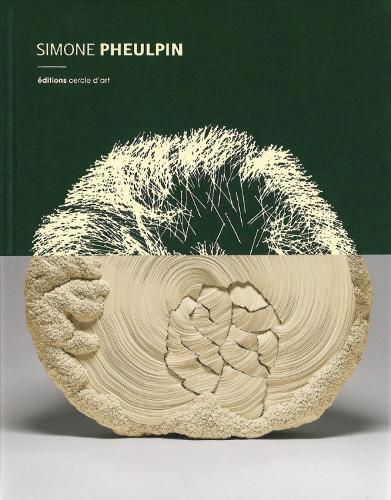Readings Newsletter
Become a Readings Member to make your shopping experience even easier.
Sign in or sign up for free!
You’re not far away from qualifying for FREE standard shipping within Australia
You’ve qualified for FREE standard shipping within Australia
The cart is loading…






I’d like cloth to be recognised as a material as noble as wood, stone or metal , says French artist Simone Pheulpin, referring to traditional sculpture. Her material is quite simple, bands of raw cotton fabric, manufactured in the Vosges. This cloth is totally transformed by a piling of very dense and regular folds held together by invisible metal pins, and nothing else. Having recognised it as a space entirely her own, she has, from sculpture to sculpture, invented a grammar of sorts, and lent to the fold as she shapes it a function that is not only visual but chromatic. The result is a very strange work that looks like colonies of coral or lichen, or else recall slabs of striated limestone, vast surfaces whose smoothness is shot with fault lines. Simone Pheulpin’s works can be found in London’s Victoria and Albert Museum, the Art Institute of Chicago and in the Musee des arts decoratifs de Paris. Text in English and French.
AUTHOR: Christophe Pradeau, novelist, essayist and book reviewer, teaches literature at the Sorbonne University. He notably created three novels published by Verdier (La Souterraine, 2005; La Grande Sauvagerie, 2010; Les Vingt-quatre Portes du jour et de la nuit, 2017), an essay illustrated with photos by Frederic Leguetteur, Proust a Illiers-Combray. L'Eclosion du monde (Belin, 2013), and poems for an artist’s book (Paysages entrebailles. Sept encres de Chine de Francoise Pace, 2011). 78 colour, 447 b/w illustrations
$9.00 standard shipping within Australia
FREE standard shipping within Australia for orders over $100.00
Express & International shipping calculated at checkout
I’d like cloth to be recognised as a material as noble as wood, stone or metal , says French artist Simone Pheulpin, referring to traditional sculpture. Her material is quite simple, bands of raw cotton fabric, manufactured in the Vosges. This cloth is totally transformed by a piling of very dense and regular folds held together by invisible metal pins, and nothing else. Having recognised it as a space entirely her own, she has, from sculpture to sculpture, invented a grammar of sorts, and lent to the fold as she shapes it a function that is not only visual but chromatic. The result is a very strange work that looks like colonies of coral or lichen, or else recall slabs of striated limestone, vast surfaces whose smoothness is shot with fault lines. Simone Pheulpin’s works can be found in London’s Victoria and Albert Museum, the Art Institute of Chicago and in the Musee des arts decoratifs de Paris. Text in English and French.
AUTHOR: Christophe Pradeau, novelist, essayist and book reviewer, teaches literature at the Sorbonne University. He notably created three novels published by Verdier (La Souterraine, 2005; La Grande Sauvagerie, 2010; Les Vingt-quatre Portes du jour et de la nuit, 2017), an essay illustrated with photos by Frederic Leguetteur, Proust a Illiers-Combray. L'Eclosion du monde (Belin, 2013), and poems for an artist’s book (Paysages entrebailles. Sept encres de Chine de Francoise Pace, 2011). 78 colour, 447 b/w illustrations